Vietnam Voted As One Of The Most Popular Destinations For New Zealanders
A survey conducted by adventure tour operator Intrepid Travel has highlighted that Vietnam represents one of the five leading destinations for tourists from New Zealand who are keen to travel over the next year.
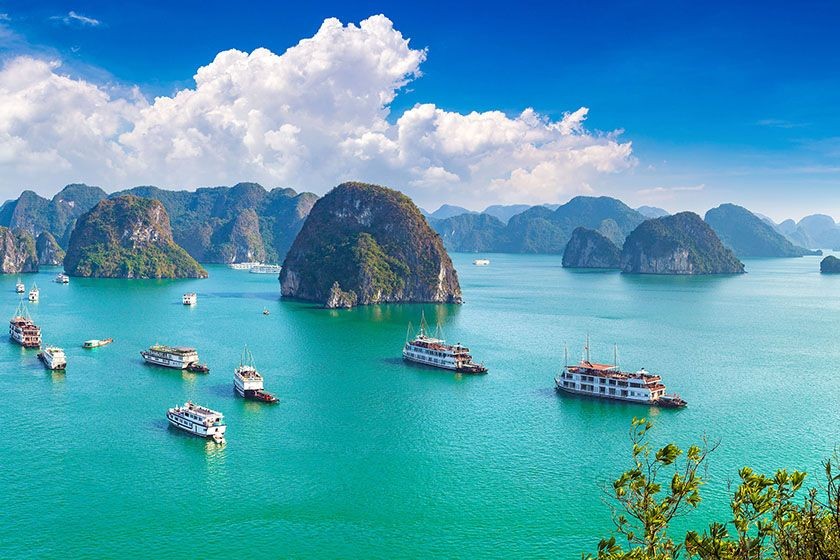 |
| Photo: Shutterstock |
According to details within the survey, roughly 85% of New Zealanders are planning to travel within the next year, despite enduring soaring living costs at home.
Of the figure, 29% of New Zealanders plan to travel overseas over the next year, while 56% intend to travel domestically.
Alongside Vietnam, other most popular destinations include New Zealand itself, Australia, Turkey, and Morocco.
The New Zealand Herald quoted Sarah Clarke, managing director of Intrepid Travel, as sayings that the company is also seeing New Zealanders start to plan for a future involving international travel.
“We're starting to see some of those key destinations come back again, like Vietnam, which is a really popular one for intrepid travel with Kiwis," she added.
Since March, the Vietnamese Government has allowed quarantine-free entry for foreign visitors from 80 countries and territories, including New Zealand.
Reasons for New Zealanders to visit Vietnam
The rich ethnic mix
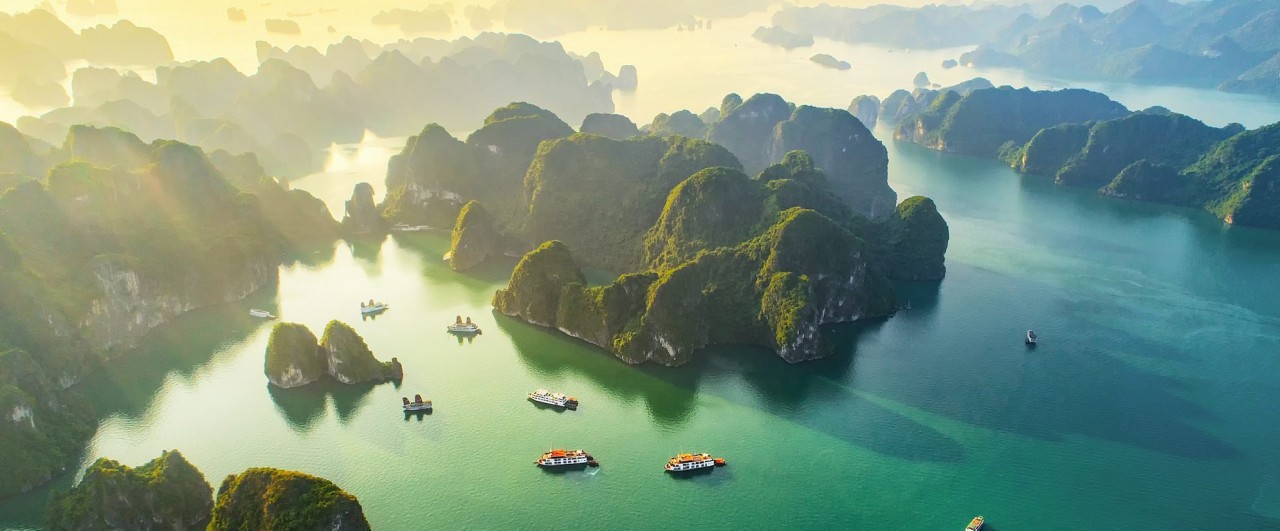 |
| Photo: Tourist Journey |
There are 54 ethnic groups in Vietnam, making it the most complex culture in Southeast Asia. The Viets are the biggest, accounting for 86 percent of the population. The rest live mostly on the margins, leading simple rural lives still characterized by distinct dwellings and ways of dressing. Ancestor and spirit worship is common.
Sapa in the northern hills is a popular base for tourists wishing to visit minority markets and villages as well as a trek in the mountains. The province of Ha Giang, further to the northeast, is less developed with an even richer mix of minorities. Visit the excellent Vietnam Museum of Ethnology in Hanoi for a good grounding.
Paradise island
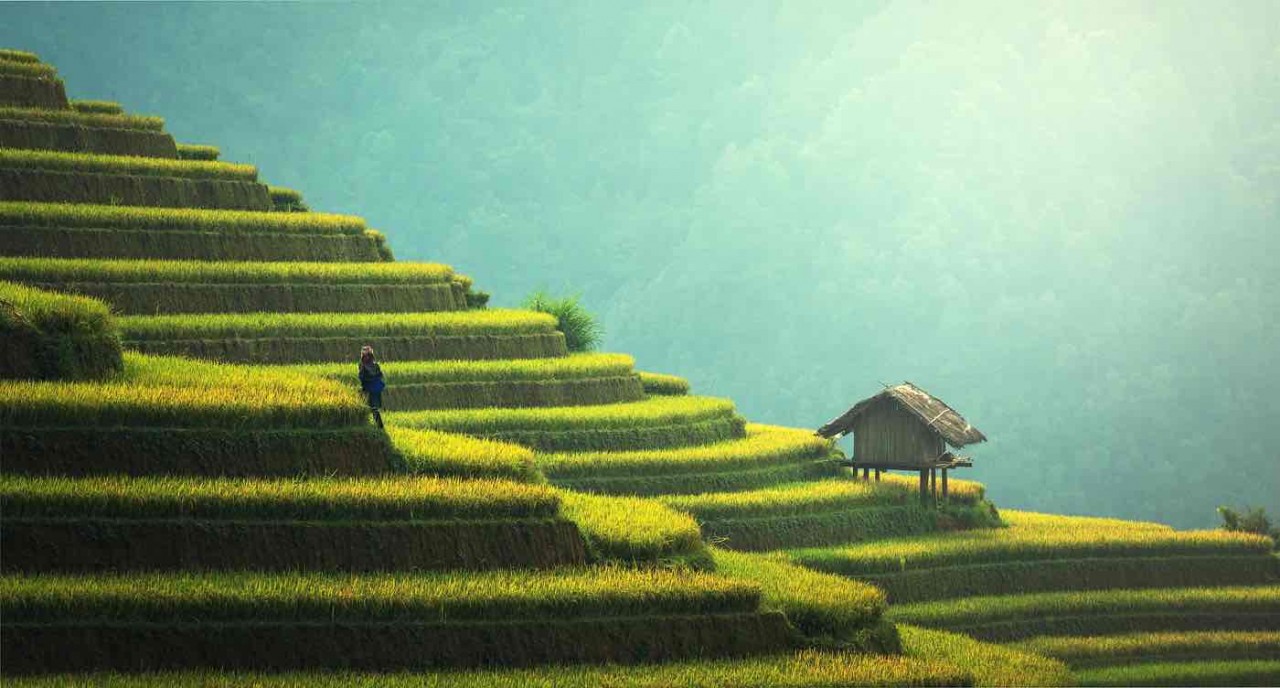 |
| Photo: Geeky Explorer |
Phu Quoc, a Vietnamese resort island, was largely undeveloped and unknown 20 years ago. Things have moved apace and it is now a mainstream destination with a sophisticated infrastructure of hotels, restaurants, and activities (snorkeling, scuba diving, and hiring a motorbike to explore the forested and hilly interior).
But its essential charms remain intact: glorious white-sand beaches (especially on the west coast), warm seas, spectacular sunsets, and laid-back charm. In the far south, the five-mile cable car ride to Hon Thom/Pineapple Island, with dramatic views of the archipelago, is claimed to be the longest such sea ride in the world.
Ha Long Bay
It's a cliche, but it's also a must – you will not be disappointed, so long as you plan with care. If you can afford it, book a berth on a small luxury boat and head east to the Bai Tu Long islands to beat the pack of day boats. Explore the floating village of Cua Van, swim off an uninhabited island, and enjoy exceptional levels of service and food on board.
Hanoi
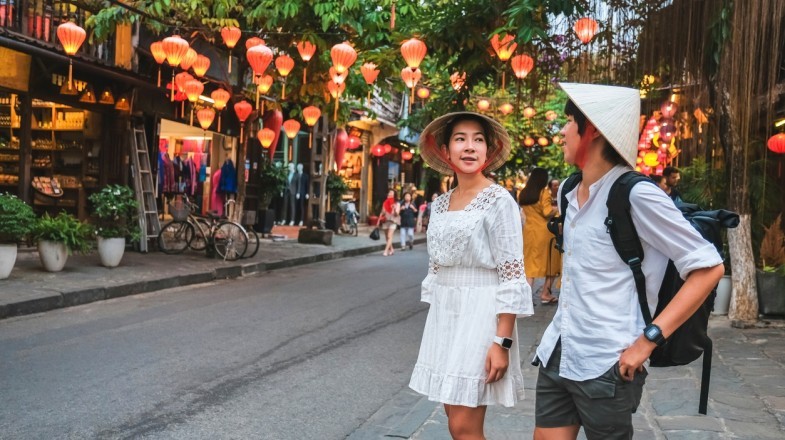 |
| Photo: Bookmundi |
The landmarks of Vietnam's cheerfully chaotic capital are the key to understanding modern-day Vietnam. Your budget might not extend to the elegant Sofitel Metropole, one of the world's great colonial-era hotels, but do drop in for lunch or tea. This takes you to the heart of the French Quarter with its neoclassical opera house, but also within strolling distance of peaceful Hoan Kiem Lake and, to the north, the bustling old quarter.
In the west, the Confucian Temple of Literature is another oasis while the complex of botanical gardens, Presidential Palace, Ho Chi Minh's Mausoleum, and Uncle Ho's actual house reflect Vietnam's momentous history. Fuel up on the delicious street food as you go.
Hoi An
 |
| Photo: Shutterstock |
Rather like a miniature Venice, this former trading port on the Thu Bon River pulls off the unlikely feat of being both a shameless tourist trap and a timeless romantic getaway. That pretense is most successfully maintained at night when the streets are strung with paper lanterns and the old wooden traders' houses are crammed with groups of diners and drinkers.
Daytime is for bicycle tours of the irrigated countryside nearby, a lazy day on Cua Dai Beach, or an excursion to the evocative ruins of My Son, a Hindu temple site of the Cham kingdom dating back to the 4th century.
Cat Tien National Park
Cat Tien, 80 miles north of Ho Chi Minh City, provides 275 square miles of tropical rainforest that protects several persecuted mammal species including elephant, civet, and tiny mouse deer. It also has 350 bird species, making it one of the finest bird-watching sites in Southeast Asia.
Ho Chi Minh City
Ho Chi Minh City may not be the country's political capital but its teeming streets and chaotic, non-stop traffic are where the pulse of modern Vietnam beats most insistently. The War Remnants Museum, a monument to the horrors of war, is a sobering reminder of how far Vietnam has come in the past half-century.
Otherwise, the best way of experiencing the city is to immerse yourself in those streets and alleyways, on foot (be brave and bold at crossings), or by “xe om” (motorbike taxi). Highlights include Ben Thanh and Cho Lon markets and the sprawling Chinatown.
Tips to know before visiting Vietnam
Download Uber/Grab apps before you arrive
While there are reputable taxi companies such as Mai Linh and Vinasun in Vietnam, Uber and Grab are becoming more popular as they can be safer, cheaper, and more convenient. By using them you can avoid being scammed, and the motorbike options available on both will help you avoid being stuck in traffic. Uber and Grab are great ways for first-timers to get from the airport to the city as card payments avoid the need to exchange cash at the airport for a high rate.
English is Not Very Commonly Spoken Here
In cities like Ho Chi Minh City and Hanoi, you will find plenty of English-speaking people. However, in the villages and smaller towns, you are hard-pressed to come across people who know more than a few English words. So it is a great idea to learn some common Vietnamese phrases and the Vietnamese words for a hotel, food, bathroom, petrol, etc.
Electricity, Money, and Wi-Fi
The official currency for Vietnam is Vietnam Dollar (VND). VND is used most commonly, but some places accept USD as well. Vietnam does not have ATMs in remote areas and it is a great idea to carry loose cash stacked away safely. Exchange money from jeweler shops for better exchange rates. The plug points are all rated for 220V AC current. It is advisable to carry a universal travel adapter. Wi-Fi connectivity is quite good in Vietnam and you will find Wi-Fi in most public places and restaurants.
Be Prepared for the Weather
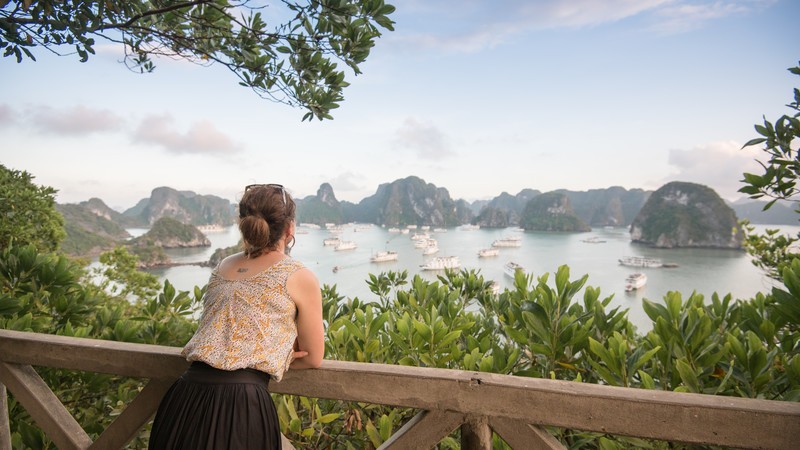 |
| Photo: Intrepid Travel |
Due to its proximity to the equator, Vietnam experiences a tropical climate. During the rainy season, torrential rainfall occurs and this may a damper for a lot of tourists. Carry plenty of summer clothes - loose, airy cotton clothes and large bottles of sunscreen. Carrying a light jacket and an umbrella is also advisable. Due to the tropical climate, mosquitos are found in abundance. Do not forget your mosquito repellant.
Diversify
Bag snatching is a big problem in Vietnam. To be safe, carry your valuables in multiple places. Keep your cash and cards in various secure pockets, and try not to carry your passport around everywhere. Do not keep your wallet, phone, and other valuables in the same bag. It also helps to have an extra copy of your credit card and bank documents in case something does happen, and you need to show proof from miles away.
Raise your hand when crossing the streets
Drawing attention to yourself while crossing the street will keep you safer; locals will also tend to do this. Make sure to cross when there aren’t many cars and buses around. Bikes can easily swerve around you. Bigger vehicles cannot.
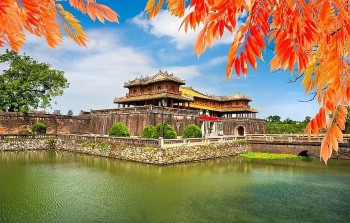 | Lonely Planet: Top 10 Most Wonderful Destinations You Can Not Miss In Vietnam With famous architectural works, beautiful islands, large national parks, and unique cuisine, Vietnam is on the list of the most recommended destinations for tourists around ... |
 | Elderly Vietnamese Couple Spends 11 Years Exploring Southeast Asia Mr. Minh, 74, and 70-year-old Mrs. Cuc have had a fantastic journey trekking throughout Vietnam and across Southeast Asia, and even to other countries for ... |
 | Nha Trang, Vung Tau Voted Among The Most Beautiful Beaches On TikTok With more than 2000 miles of coastline, Vietnam brims with secluded coves, white sands, and waters fit for snorkeling. Crystal blue water, sandy beach, and ... |
Recommended
 Travel
Travel
Strategies for Sustainable Growth of Vietnam’s Tourism from International Markets
 Travel
Travel
Vietnam Strengthens Its Presence On The Global Tourism Map
 Multimedia
Multimedia
Phong Nha-Ke Bang National Park Named Top Adventure Travel Site
 Travel
Travel
Luxury Train From Hanoi To Hai Phong To Be Launched In May
 Travel
Travel
Phong Nha Named Top Budget-Friendly Travel Destination for Spring 2025: Agoda
 Travel
Travel
Four Indian Films Introduced to Lao Cai Audience
 Travel
Travel
Vietnam to Waive Visas for Citizens from 12 Countries until 2028
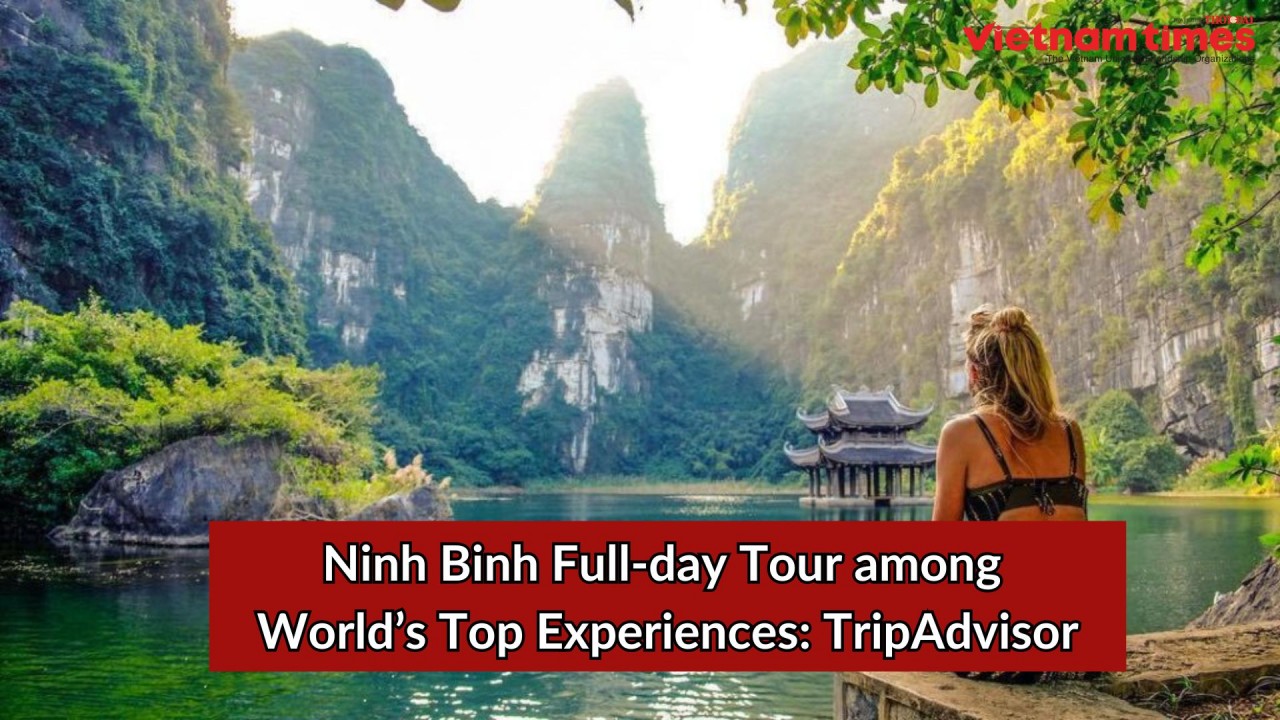 Travel
Travel


